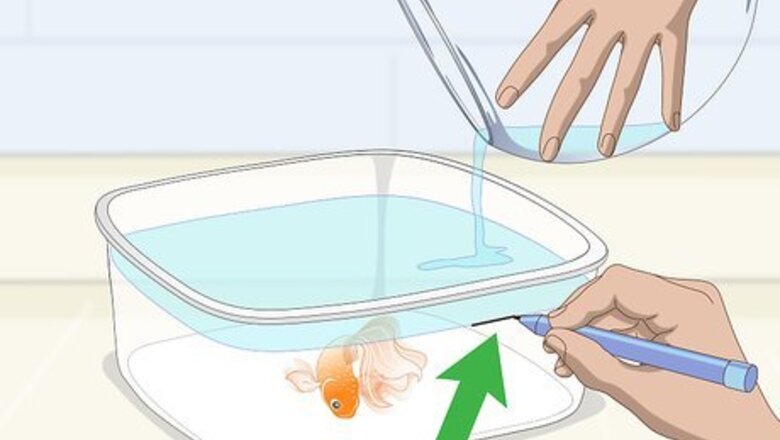
views
Preparing the Water
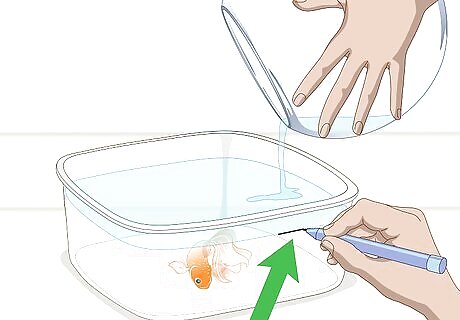
Figure out how much water your bowl holds. In order to determine how much clean water you’ll need to prepare, you first need to gently pour the bowl's current water and the fish into a clean, soap-free bucket or container. Then, mark the water level on the outside of the bucket.
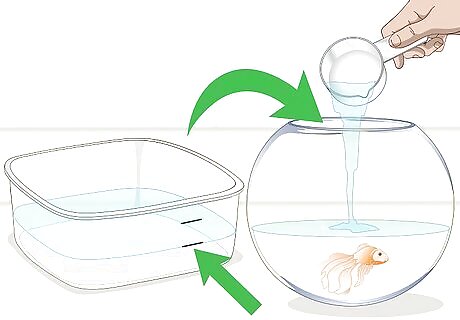
Figure out how much new water you’ll need. When you clean your fish bowl, you’ll need to replace 40-50% of the total volume of water that it holds. After you’ve marked the initial water level, use a clean cup to start putting the water back into your bowl. Once you’ve removed about half of the water, mark the new water level on the outside of the bucket and transfer the fish back into the bowl with a net.
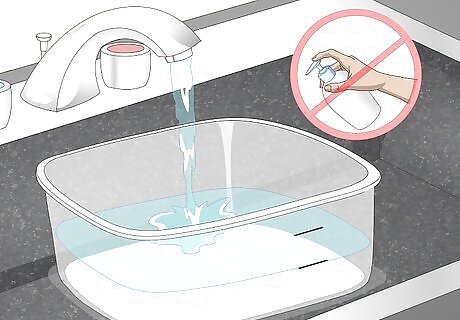
Fill the clean container with fresh water. Once your fish is safely back in its bowl, rinse out the container you were just using. Don’t use soap to clean out the container, because this will be harmful to your fish. Fill the container back up to the halfway mark you made with fresh water.
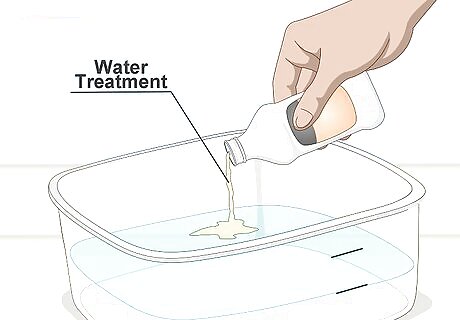
Treat the water using a water treatment kit. At this point, read and follow the directions on the label of your water treatment kit. Add the appropriate number of drops to the water that’s in the container. You can find water treatment for fish bowl water at any major pet store. The treatment will eliminate chlorine, chloramines and other substances that are toxic to fish. This is a necessary step in ensuring that the water will have the proper balance of chemicals to keep your fish healthy.
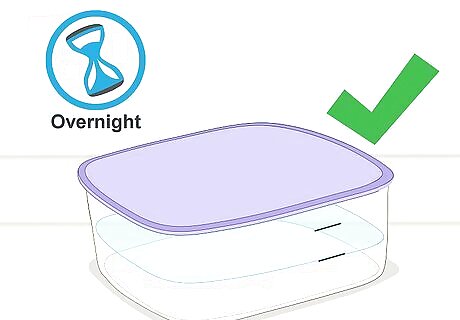
Cover the container and let the water age overnight. Cover the container with a lid to prevent airborne contaminants from making their way into the water. Let the container sit overnight so that the water can "age" and reach room temperature.
Cleaning Inside Objects
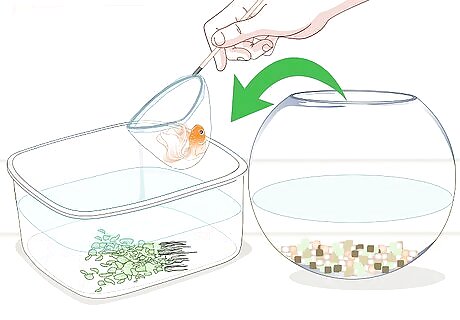
Move your fish, plants, and old water from the bowl to the container. Use a net to carefully remove your fish and any live plants from the fish bowl. One by one, transport your fish and plants to the container of treated water. Pour about half of the old water into the container of treated water with the fish and plants.
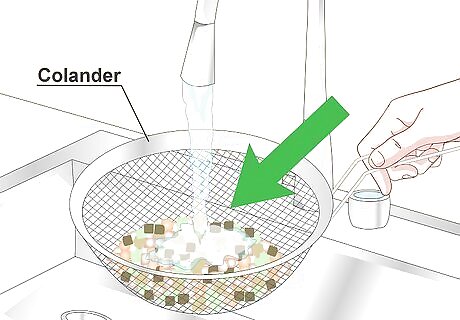
Filter out dirt and waste with a colander. Remove any rocks or decorations from the fishbowl, put them in a colander, and take them to a sink. Hold the colander directly under the faucet and shake it lightly from side to side as the running water filters out dirt and waste. Do this until the water underneath the colander runs clear.

Use hydrogen peroxide to remove algae. Add a half teaspoon (2.5 ml) of hydrogen peroxide to a quart of water (0.95 liters). Soak the rocks and decorations in this solution during the time you spend cleaning the fish bowl. Afterwards, rinse the items well with clean water. Hydrogen peroxide is safe for your fish to be exposed to in small amounts because after 24 hours, it decomposes into hydrogen and oxygen.
Cleaning a Dirty Bowl
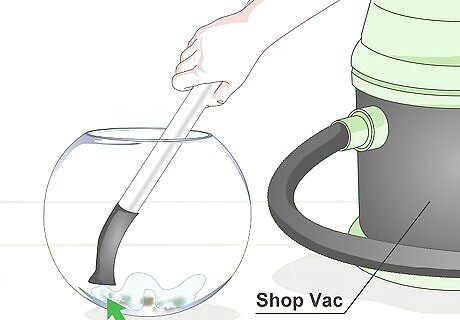
Suck up dirt and waste with a shop vac. While your fish is in the container and the rocks and decorations are soaking in hydrogen peroxide, clean out the bowl. Use a wet/dry shop vac to suck up any remaining dirt, waste, and moisture that didn’t fall out naturally when you emptied the bowl. Cover the nozzle with three layers of panty hose and secure it with a rubber band if you ever need to clean the bowl quickly and you don’t have time to remove the rocks, decorations, and water first.
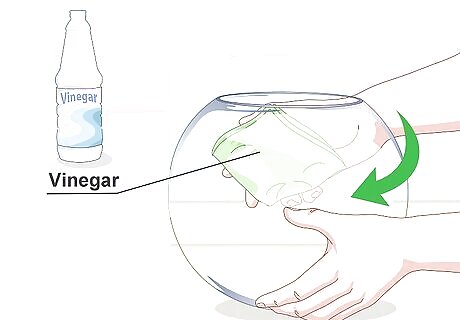
Wipe the bowl with vinegar and a cloth. Dip a clean cloth or paper towel in vinegar and scrub the fish bowl clean. Then, dip another clean cloth or paper towel in water and wipe all surfaces of the bowl again.
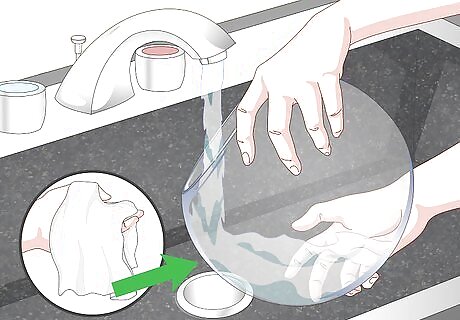
Rinse and dry the bowl thoroughly. Place the bowl under the sink faucet and rinse the inside and outside well. With a cloth that’s clean and dry, wipe the bowl dry to remove spots and ensure your fish’s safety.
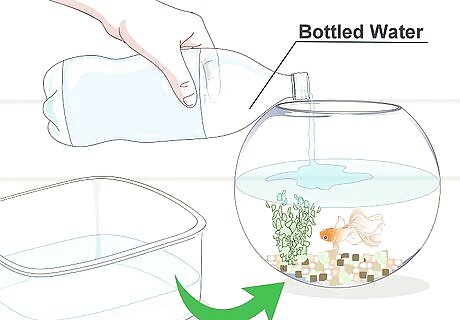
Put everything back into the bowl and top it off with bottled water. After the bowl is clean, place the rocks and decorations back in and carefully pour the container of treated water back into the bowl. Stop about halfway through and use a net to transport the fish and live plants. Fill the fish bowl with bottled water until it reaches about 2 inches (5.08 cm) from the top.











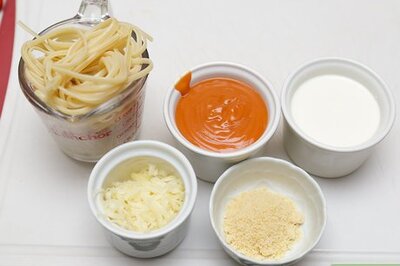





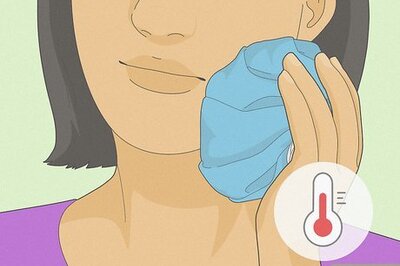

Comments
0 comment